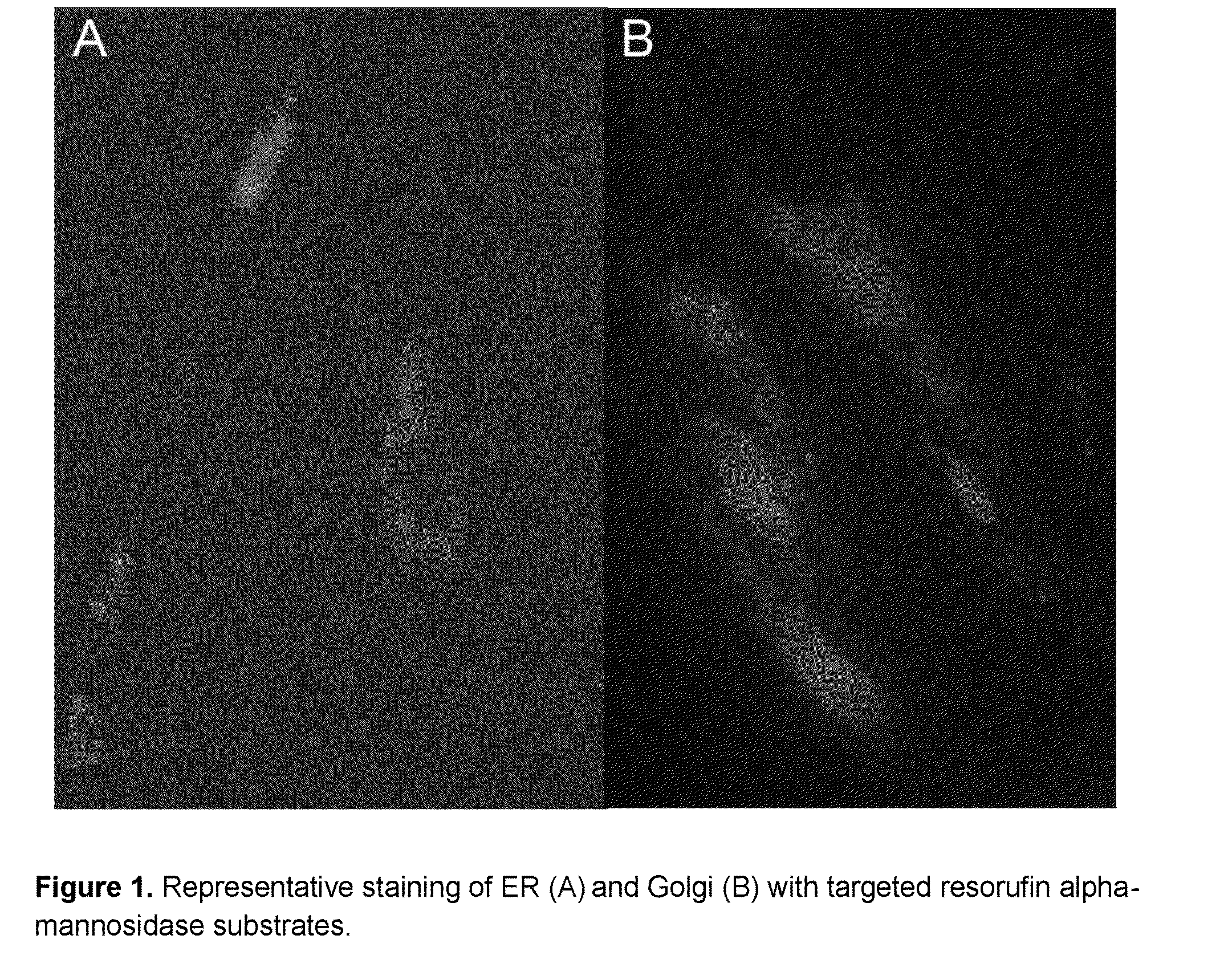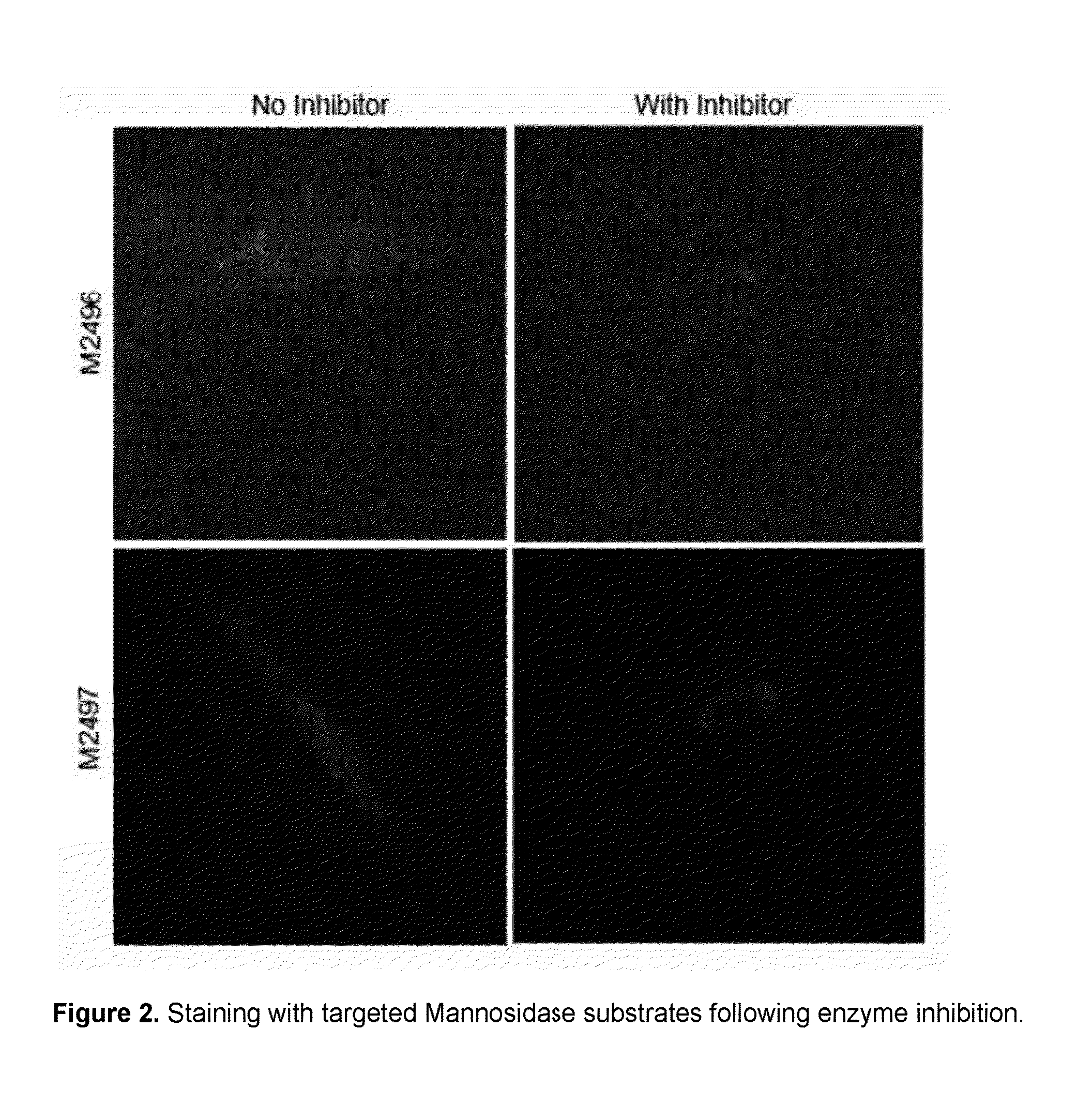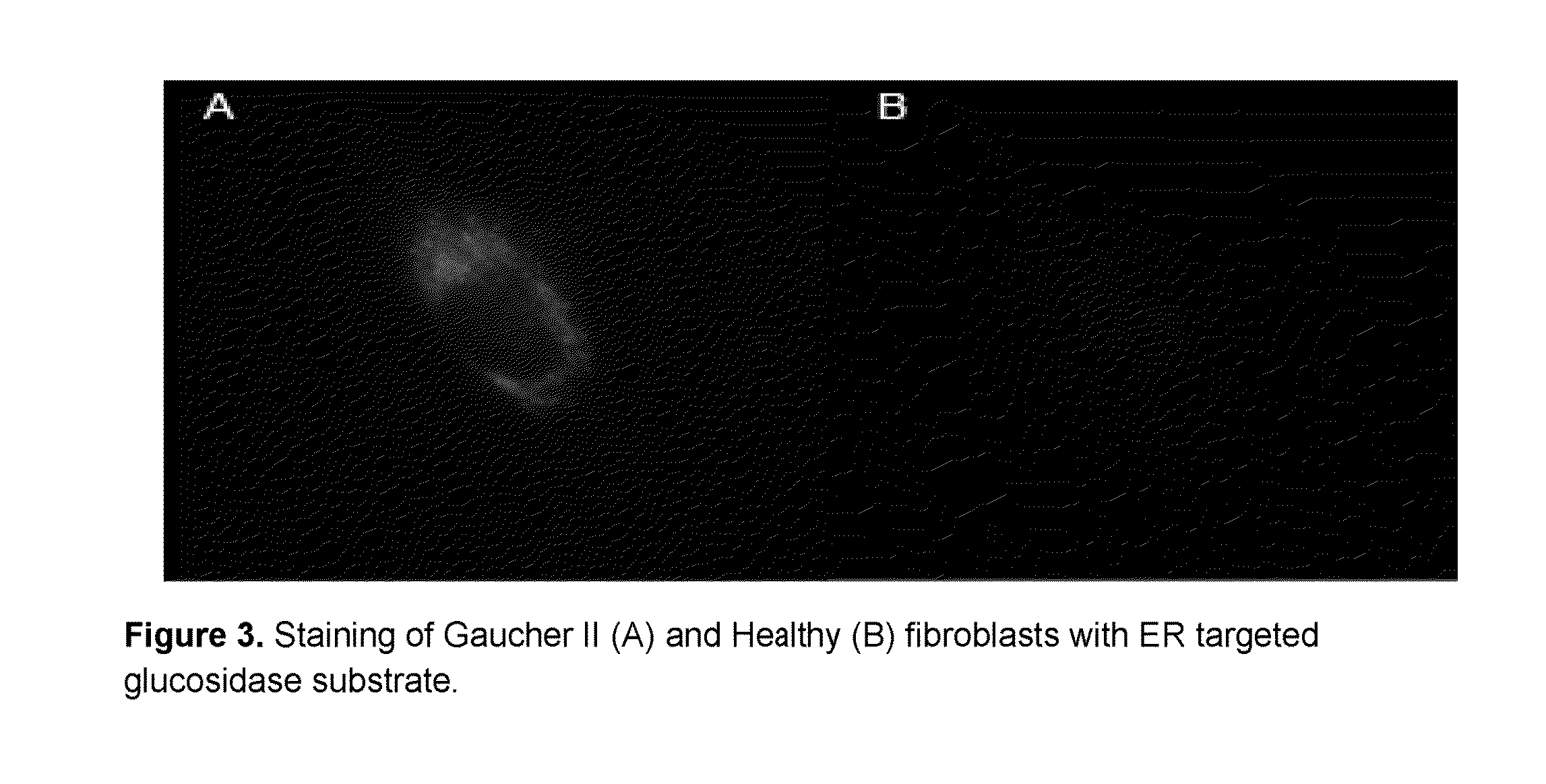Intracellular organelle peptide targeted enzyme substrates
- Summary
- Abstract
- Description
- Claims
- Application Information
AI Technical Summary
Benefits of technology
Problems solved by technology
Method used
Image
Examples
example 1
Preparation of a 7-Nitrobenzofurazan-Based Endoplasmic Reticulum-Targeted Dye
4-maleimido-1-butanammonium trifluoroacetate (M1959)
[0096]To a 250 mL round-bottom flask was added 4-amino-1-butanol (1.56 mL, 16.9 mmol) and water (35.0 mL). The solution was cooled to 0° C., and sodium bicarbonate (2.83 g, 33.7 mmol) was added. After 5 min, t-Boc anhydride (5.52 g, 25.3 mmol) in THF (5.0 mL) was added. After 17.5 h, the reaction solution was extracted with dichloromethane (3×50 mL). The organic layer was washed with water (2×50 mL), dried over MgSO4 and concentrated in vacuo. The resulting crude t-Boc carbamate (3.99 g) was added to a 100 mL round-bottom flask containing triphenylphosphine (4.88 g, 18.6 mmol) and maleimide (1.81 g, 18.6 mmol) in THF (50 mL). After 15 min, diisopropyl azodicarboxylate (4.00 mL, 20.3 mmol) was added. This reaction solution was allowed to stir for 16 h, the solution was concentrated in vacuo and the product purified via flash chromatography over SiO2, elutin...
example 2
Preparation of a 7-Nitrobenzofurazan-Based Golgi Apparatus-Targeted Probe
4-(4-maleimidobutanamino)-7-nitrobenzofurazan, conjugated to Golgi-targeting peptide (M2423)
[0099]To a 1.5 mL Eppendorf tube was added a solution of M2419 (100 μL, 2.0 mM in acetone, 0.2 μmol, a solution of H2N-G-A-S-D-Y-Q-R-L-C-COOH (SEQ ID NO:7) (100 μL, 1.0 mM in water, 0.1 μmol) and a solution of triethylamine (100 μL, 0.10 mM in water, 0.010 μmol). After gently agitating the vial by inversion for 18 h, the solution was diluted into water (500 μL) and extracted with chloroform (3×500 μL). The aqueous layer was lyophilized to give M2423, homogeneous by TLC (10% acetic acid / methanol) Rf=0.11.
example 3
Preparation of a Resorufin-Based α-Mannosidase Substrate Targeted to the Endoplasmic Reticulum Exhibiting Red Fluorescence after Enzyme Activity
N-Hydroxysuccinimide trifluoroacetate (M1027)
[0100]To a flame-dried 25 mL round-bottom flask was added N-hydroxysuccinimide (1.15 g, 10.0 mmol) and trifluoroacetic anhydride (3.80 mL, 27.5 mmol). After 2 h, the solution was concentrated in vacuo, co-evaporated with toluene (2×25 mL) and dried in vacuo to give M1027 (2.03 g, 9.62 mmol, 96%) as a white solid.
2-chloro-6-carboxyresorufin (M2458)
[0101]To a flame-dried 250-mL round-bottom flask was added 4-nitroso-6-chlororesorcinol (6.94 g, 40.0 mmol) and 2,6-dihydroxybenzoic acid (6.16 g, 40.0 mmol), and the solids dissolved slowly into conc. sulfuric acid (40.0 mL). The stirred solution was heated to 107° C. for 35 min., and the resulting red / brown solution was allowed to cool to room temperature, poured into ice-cold water (300 mL). After stirring for 15 min, the red precipitate was collected ...
PUM
| Property | Measurement | Unit |
|---|---|---|
| Magnetic field | aaaaa | aaaaa |
| Capacitance | aaaaa | aaaaa |
| Fluorescence | aaaaa | aaaaa |
Abstract
Description
Claims
Application Information
 Login to View More
Login to View More - R&D
- Intellectual Property
- Life Sciences
- Materials
- Tech Scout
- Unparalleled Data Quality
- Higher Quality Content
- 60% Fewer Hallucinations
Browse by: Latest US Patents, China's latest patents, Technical Efficacy Thesaurus, Application Domain, Technology Topic, Popular Technical Reports.
© 2025 PatSnap. All rights reserved.Legal|Privacy policy|Modern Slavery Act Transparency Statement|Sitemap|About US| Contact US: help@patsnap.com



